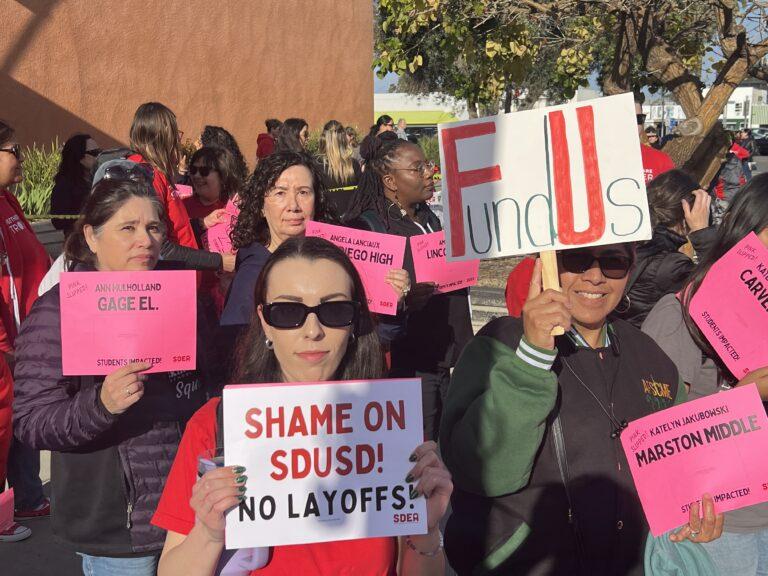Thousands of California educators have once again been issued pink slips this year, signaling a wave of job uncertainty in school districts across the state. According to a recent report by EdSource, the recurring layoffs highlight ongoing fiscal challenges and shifting enrollment trends that continue to strain the education system. This latest round of notices underscores the precarious position many teachers and staff face despite efforts to stabilize funding and staffing amid the evolving landscape of California public education.
Educators Face Widespread Job Uncertainty Amid Budget Cuts
In a troubling trend repeated for the third consecutive year, thousands of California educators have been issued pink slips as school districts struggle to balance their budgets amid ongoing funding shortfalls. The uncertainty has left many teachers, counselors, and support staff in limbo, casting a shadow over the upcoming academic year. Districts cite declining enrollment and reduced state funding as primary reasons for the widespread layoffs, which affect both veteran educators and newcomers alike.
Key factors contributing to the crisis include:
- Statewide budget cuts totaling nearly $2 billion
- Declining student enrollment rates due to demographic changes
- Increased operational costs with fewer resources available
| District | Pink Slips Issued | Percentage of Staff Affected |
|---|---|---|
| Los Angeles Unified | 1,200 | 4.5% |
| San Diego Unified | 450 | 3.1% |
| San Francisco Unified | 180 | 2.8% |
As uncertainty mounts, educators are advocating for greater transparency in budget decisions and increased state intervention to stabilize funding. With education professionals bearing the brunt of fiscal constraints, the future of California’s public education system remains at a crossroads.
Impact of Pink Slips on Student Learning and School Communities
The recurrent issue of pink slips leaves a profound mark on both student achievement and the overall dynamics within school communities. When educators face the reality of pink slips, uncertainty sweeps through classrooms, disrupting continuity and undermining the establishment of long-term student-teacher relationships. Research consistently correlates high staff turnover with diminished student performance, especially in under-resourced districts where experienced teachers are critical. Beyond academics, such instability can affect the emotional well-being of students, who often rely on trusted educators for support, guidance, and mentorship.
The ripple effects extend to school culture and community engagement as well. Frequent layoffs contribute to decreased staff morale, fostering a sense of insecurity and hampering collaboration among educators. This often results in:
- Reduced innovation: Teachers hesitant to invest in new projects or curricula due to job insecurity.
- Community distrust: Families losing confidence in the school system’s ability to provide stable and quality education.
- Resource misallocation: Time and effort diverted from teaching to managing layoffs and transitions.
These challenges highlight the need for sustainable funding models that prioritize workforce stability to safeguard student success and strengthen community ties.
| Impact Area | Consequences |
|---|---|
| Student Learning | Interrupted instruction, lower test scores |
| Teacher Morale | Decline in motivation, increased burnout |
| Community Trust | Reduced parental involvement |
Analysis of Funding Shortfalls Driving Staff Reductions
Faced with dwindling revenue streams and constrained budgets, school districts across California are grappling with significant funding shortfalls that directly impact staffing. The recurring issuance of pink slips is largely driven by these financial gaps, forcing districts to reduce personnel despite growing student populations and needs. Key factors exacerbating these shortfalls include declining local tax revenues, state funding formula adjustments, and unexpected increases in operating costs. The delicate balancing act between maintaining quality education and fiscal responsibility is pushing administrators to make tough choices, often at the expense of educators’ job security.
In many cases, districts prioritize essential roles and programs, leading to targeted cuts in staff that fulfill less critical functions or hold temporary contracts. Stakeholders argue that this approach, while fiscally necessary, threatens long-term educational outcomes and morale among remaining staff. Below is a summary of primary causes contributing to the funding deficits fueling these layoffs:
- State Budget Deferrals: Delayed payments causing cash flow disruptions
- Enrollment Fluctuations: Decreased attendance reducing per-pupil funding allocations
- Rising Pension Obligations: Increased employer contributions squeezing operational budgets
- Pandemic-Related Expenses: Unanticipated costs for health protocols and remote learning tools
| Funding Issue | Impact on Staff | District Examples |
|---|---|---|
| Budget Deferrals | Delayed salaries, hiring freezes | Los Angeles, Fresno |
| Enrollment Declines | Fewer teaching positions | Sacramento, San Diego |
| Pension Costs | Reduced discretionary spending | Oakland, San Jose |
Strategies for Advocates and Policymakers to Protect Educator Jobs
To stem the ongoing wave of pink slips among California educators, advocates and policymakers must prioritize strategic investment in education funding that directly protects jobs. Sustained lobbying for increased state budgets earmarked for teacher salaries and support staff is critical, especially during economic downturns. Additionally, promoting policies that incentivize local districts to adopt multi-year financial planning can create more stability, reducing the reactive nature of mass layoffs. Collaboration with unions and community organizations to highlight the human impact of layoffs through public campaigns can also generate broader support for budget reallocations favoring education employment.
Innovative legislative measures deserve attention as well. For example, introducing laws that limit districts’ ability to cut teaching positions below a set threshold or mandating transparent reporting on the causes behind pink slips can enhance accountability. Policymakers should also explore alternative staffing models, such as shared services across districts or expanded roles for paraprofessionals, to maintain classroom instruction while managing costs. By combining advocacy with actionable policy proposals, stakeholders can build an ecosystem that shields educators from recurring job insecurity.
To Wrap It Up
As California continues to grapple with budget uncertainties and shifting educational priorities, the issuance of thousands of pink slips to educators underscores the ongoing challenges facing the state’s school districts. While some districts cite financial constraints, educators and advocates warn of the potential long-term impact on student learning and staff morale. With negotiations and policy decisions still underway, stakeholders are calling for sustainable solutions to stabilize teacher employment and protect the quality of education for California’s students.







